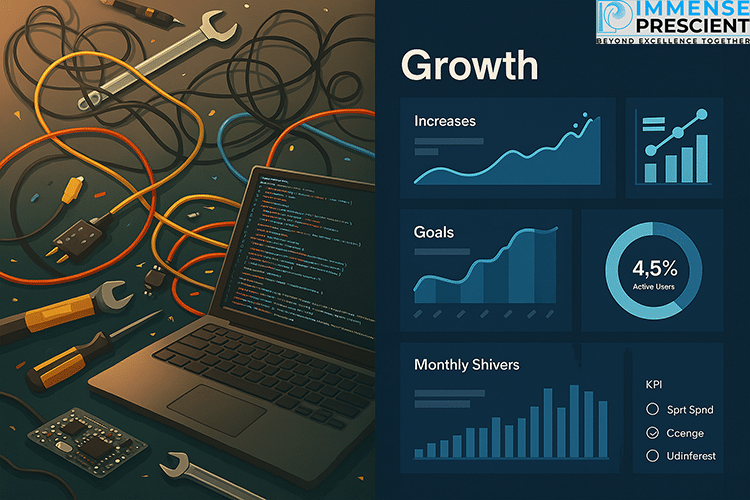Beyond the Stack: Building Business-Aligned Technology That Actually Delivers ROI
Introduction
In the fast-paced digital economy, most technology projects don’t fail because the tools are bad — they fail because the business and the technology aren’t speaking the same language. Too often, organizations obsess over the stack(frameworks, tools, platforms) instead of focusing on the strategy.
It’s time to go beyond the stack — to design technology that’s not just technically impressive, but strategically aligned, ROI-focused, and capable of delivering measurable business value.
1. The Stack Obsession Problem
Walk into any tech team’s planning meeting and you’ll hear debates about frameworks, cloud providers, and architecture patterns.
What you’ll hear less often is: How does this project tie directly to revenue, efficiency, or customer experience?
Symptoms of Stack Obsession:
- Over-engineering solutions that customers don’t actually need
- Chasing the latest “shiny” tool without clear business benefits
- IT and business teams operating in silos
- Delayed delivery because tech goals trump business goals
2. Business-First Technology Planning
The shift starts with business-first thinking.
Before selecting tools, define:
- Core business objectives: revenue growth, cost reduction, market expansion, customer retention, etc.
- Success metrics: measurable KPIs linked directly to business outcomes.
- Strategic timeframes: align tech roadmaps to business timelines.
When the tech strategy starts with the business plan, the tools become enablers — not the centerpiece.
3. The ROI Lens for Technology Decisions
Every tech investment should pass the ROI filter:
If we deploy this, how soon will we see measurable returns?
This means factoring in:
- Cost of implementation vs. value generated
- Time-to-market and adoption rates
- Impact on revenue, operational efficiency, or customer loyalty
4. Integrating Stakeholders Early
To bridge the business–tech gap, bring in:
- Business leaders to define strategic goals
- Tech teams to validate feasibility and suggest smarter execution paths
- End-users to ensure usability and adoption
Cross-functional involvement prevents the “IT builds it, business ignores it” trap.
5. From Technology Projects to Business Platforms
A truly business-aligned tech initiative evolves beyond a single project:
- It becomes a platform that can adapt as business needs shift.
- It’s scalable, integrated, and data-driven.
- It grows in ROI over time instead of depreciating after launch.
Conclusion
Tech stacks matter — but they’re just the ingredients. Without a strong business recipe, you’ll never cook up ROI.
The organizations that win aren’t just the most technologically advanced — they’re the most strategically aligned.
It’s time to move beyond the stack and start building technology that works as hard for the business as the people who run it.




